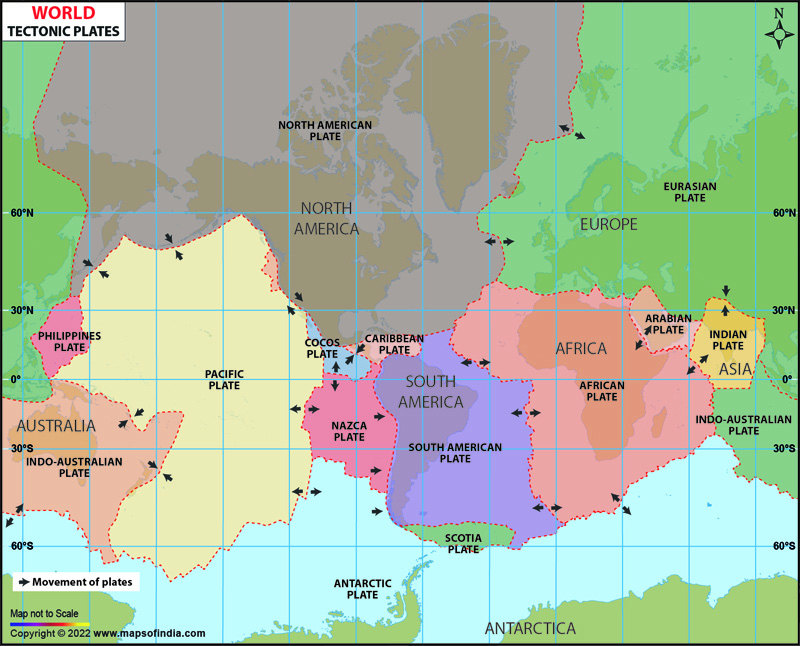The moving Earth
The Earth's surface- geologically called the Lithosphere- is made up of large plates, in constant motion, travelling a few centimeters every year. The hot magma or molten rock inside the core of the earth causes convection currents which move the plates in different directions.
The continents, countries within those continents, and the ocean basins rest on the Lithosphere or the top crust of the earth and so are part of the moving tectonic plates. The landmasses and the ocean floors which are part of the plates are constantly moving, spreading from the center, and striking at the edges. In a way there is intense geological activity which is constantly changing the surface features of the Earth. We can't see these changes but over time - sometimes millions of years - they can be enormous.
The different Tectonic plates
This map displays tectonic plates, all shaded differently, and the continents and oceans which constitute those tectonic plates. The direction of the movement of the plates is also marked on the map.
The fifteen tectonic plates are: Indo- Australian plate, Philipino plate, Pacific plate, Juan De Fuca plate, North American plate, Cocos plate, Nazca plate, Caribbean plate, Antarctic Plate, Scotia plate, Eurasian plate, Arabian plate, African plate, South American plate, and Indian plate.
The edges of these plates, where they move against each other are sites of intense geological activity such as earth quakes, volcanoes and mountain building. In fact, Himalayas, the highest mountain ranges in the world were built this way. Fifty- five million years ago, The Indian plate, considered part of the Indo Australian plate collided with the Eurasian plate and pushed up the mountains. As the Indian Plate and the Indo Australian plate are still moving north, these mountains are still growing. As a result of the movement of the plates, this region is earthquake prone too.
The North American and Eurasian plates are large plates, though the small size of the Juan de Fuca plate belies the destruction the active volcanoes that arise because of the plate cause.
The area where the Pacific and North American plates meet is the site of intense earthquakes, and the 'Ring of Fire' around the perimeter of the Pacific Ocean is the site for a string of active Volcanoes. As the Pacific plate moves, it rubs against the surrounding plates and this rubbing or movement causes the molten magma to erupt all around the plate's outer edges.
Last Updated on : November 13, 2025

